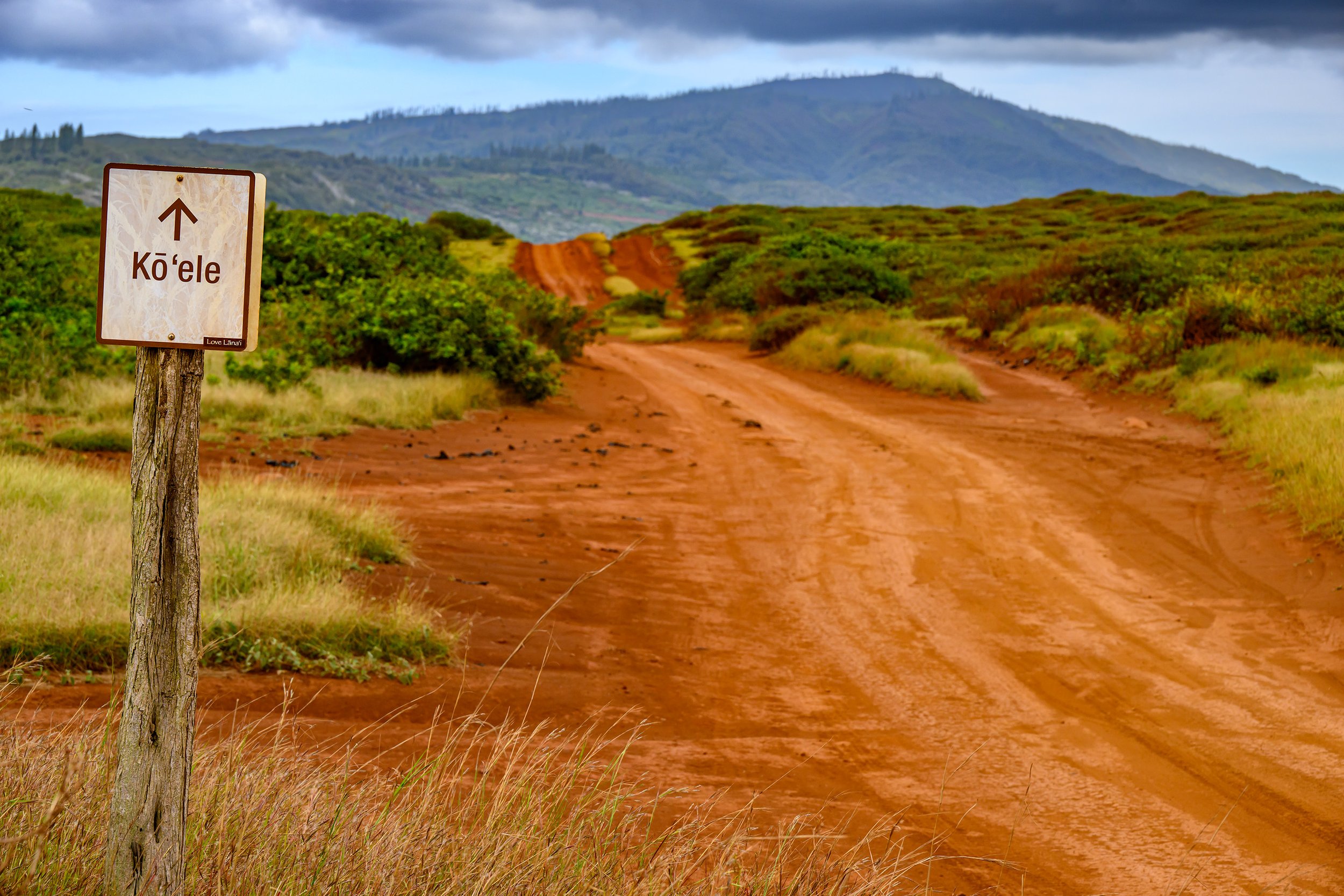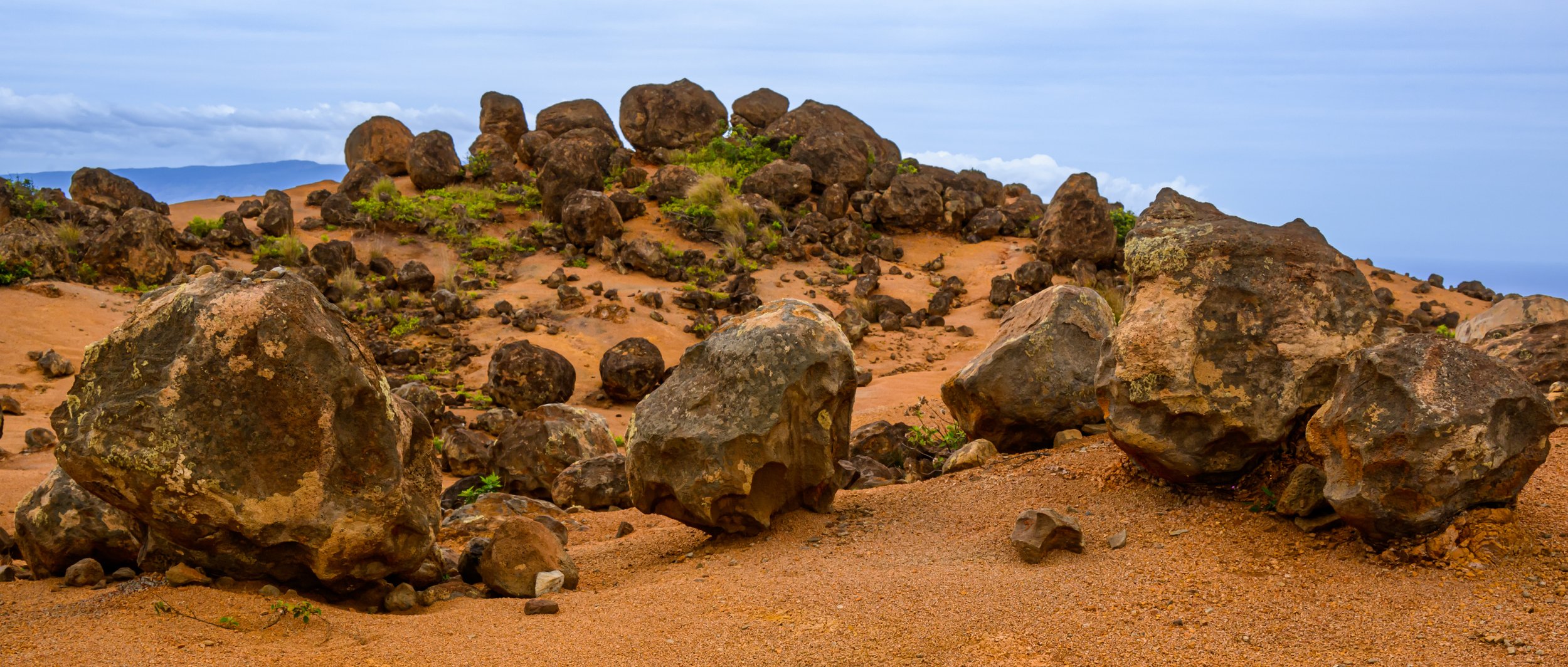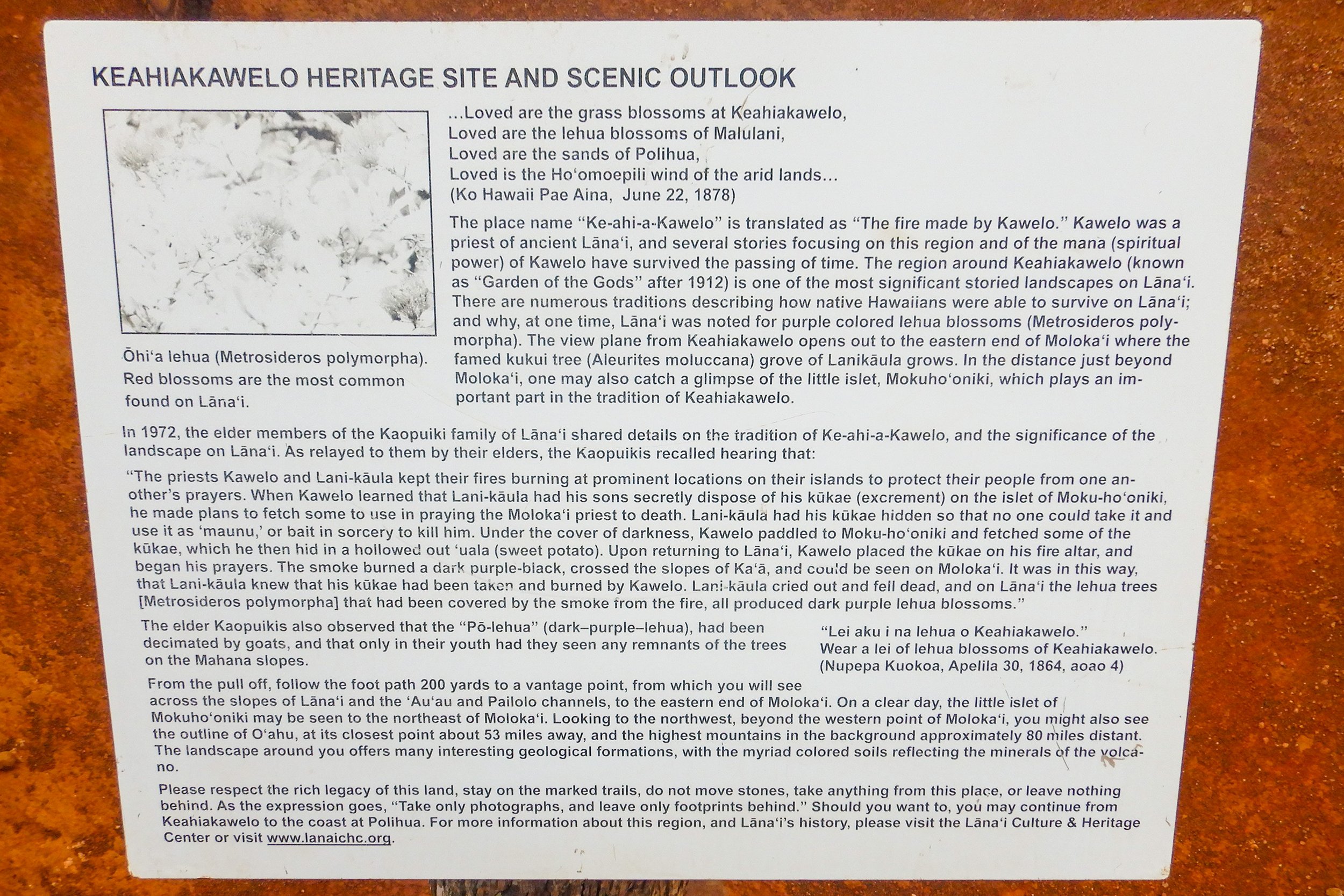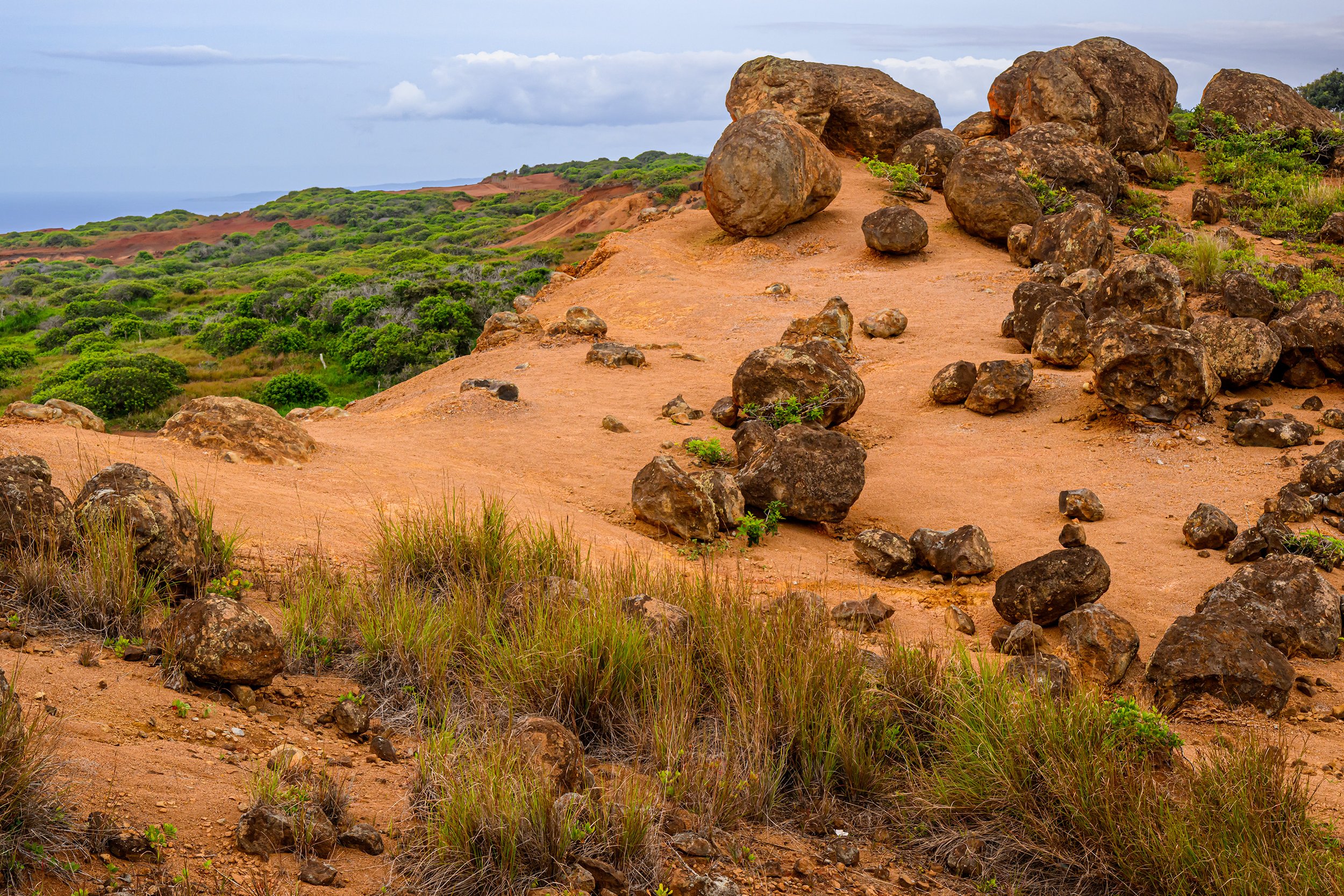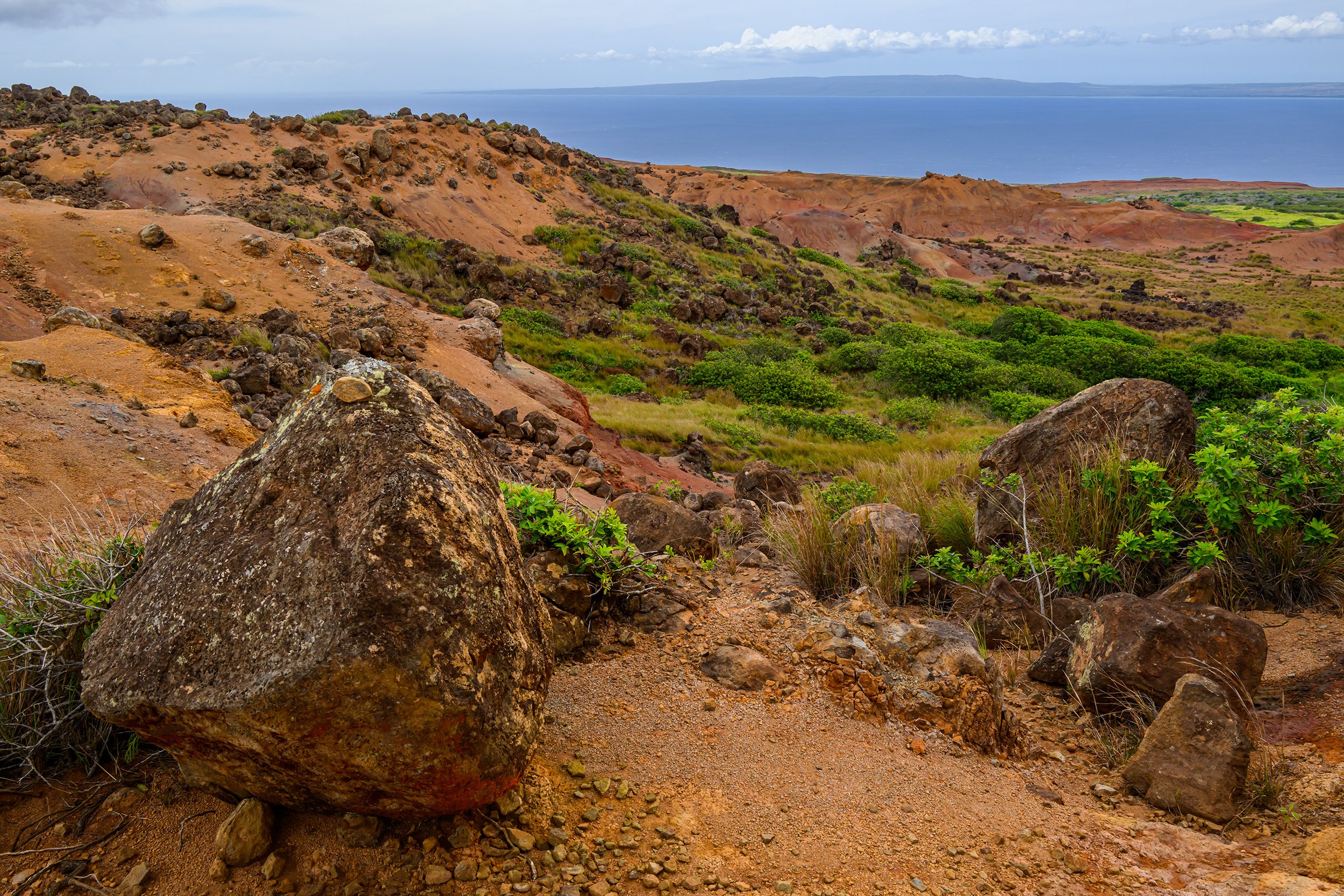Lanai
We arrived in Manele Bay and ended up in mars!
Lanai is ninety percent privately owed by Larry Ellison (founder of tech company, Oracle. Full disclosure my husband was a founder of a company acquired by Oracle) Affectionately called “Uncle Larry” in the way that beloved older men and women are called uncle or auntie in Polynesian culture, he is one of the more benevolent owners of the island.
Interestingly, in ancient Polynesian culture, land was not owned, but divided in pie shaped communities, called ahupua’a divided fairly from the tip of a central volcano in a triangle down to a wide swath of the coastal land. This gave every community a fair share of highlands, fertile valleys for agriculture and coastline to fish, and access to the ocean to travel by outrigger canoe. In Molokia, our guide whose family had lived on the land for generations, explained that families from other islands or ahupua’as on the same island would use the conch to signal a desire to meet or visit a neighbor. The neighbor would use their conch to respond. Families respected each others autonomy and respected the idea that every family should have access to some of the natural resources. Natural resources were respected culturally as aloha aina (roughly translated as love of the land) and family and ancestors was valued in the ancient culture.
Safari Explorer in Manele Bay
Being largely privately owned for last few centuries, lends a carefully developed look to the island, including attractive shops and high end resorts.
During an ebike ride in Lanai along the red dirt tracks, we noticed chunks of black plastic bag debris. It made me wonder how this enlightened culture went from sharing natural resources to being exploited by an agribusiness and left with an environmental mess. The history is complicated, as it is in most places, in the 12th and 13th centuries, musch of the culture was dominated by a series of complicated restrictive rules called “kapu”. King Kamehameha I ended the peaceful coexistence when he conquered several of the inhabited islands and over time his heirs eliminated the kapu rules, but this led to more interference by foreign industries and missionaries. As westerners “discovered” Polynesia they began to convince the leaders to change the constitution and sell off the land to agricultural interests from the US.
Lanai was sold to sugar cane industries and the water intensive crop depleted all of the fresh water on the island. Dole company then bought the island for pineapple plantations, and replenished the water with Cook Island pines because they create water. But unfortunately the pineapple industry left plastic debris throughout the islands where the pineapple fields.
Cook Island pines planted on Lanai, where they produce more water than they use, they replenish water to the land.
So now, Uncle Larry now owns the island and is using it as a controlled environment to research various sustainable environmental practices. During our visit, we took an e-bike tour in the Ko’ele area on the Munro Trail at the middle of the island. We noticed as we left the bay, that the land changed, bright orange soil was everywhere, and we noted the Cook Island pines planted all around the island.
Eventually we ended up in a landscape so different from anything we’d seen on other islands, although Molokai had some red soil, it also had mire vegetation. The red moonscape of Lanai at Garden of the Gods was like anywhere else we’d ever seen, dry but not the same as desert areas, and the red boulders formed by compacted sand looked like nothing we’d ever seen before, with desert like environment with ocean all around!
By the time we returned from our e-bike adventure, we were covered in orange dirt, but we had gone from the ocean to “mars” in just one short adventure!
